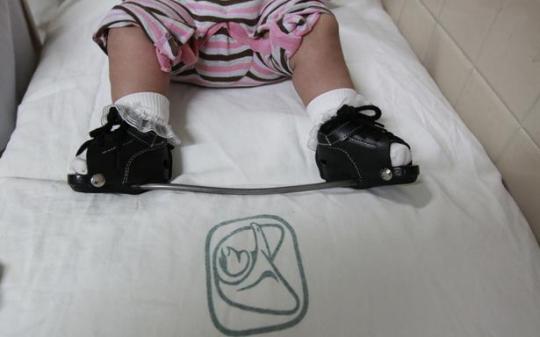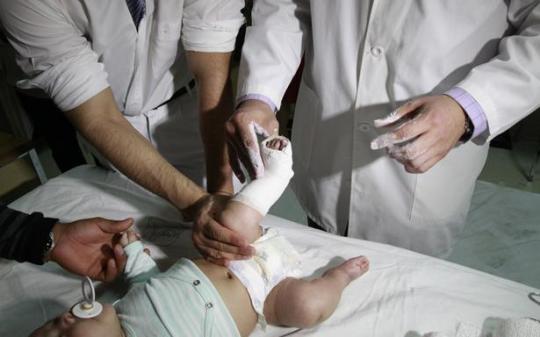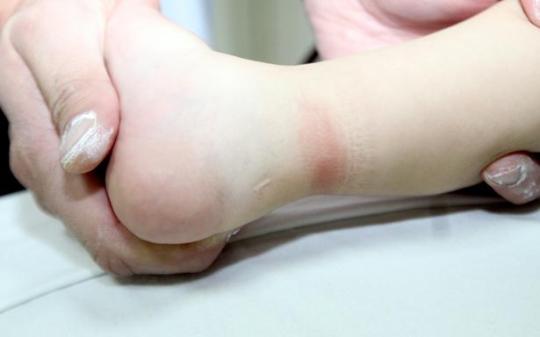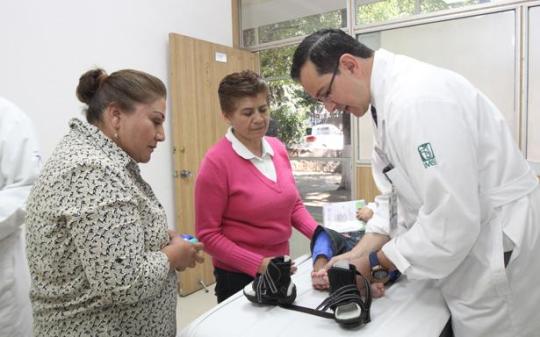| |||||||||||||
|
lunes, 27 de marzo de 2017
Bloqueo neuromuscular en ancianos / Neuromuscular blockade in geriatris
Comparación de los resultados de la artroplastia total del hombro reversa, con y sin reparación subscapular
Comparison of reverse total shoulder arthroplasty outcomes with and without subscapularis repair
FuenteEste artículo es originalmente publicado en:
https://www.ncbi.nlm.nih.gov/pubmed/28277259
http://www.jshoulderelbow.org/article/S1058-2746(16)30448-7/fulltext
De:
Friedman RJ1, Flurin PH2, Wright TW3, Zuckerman JD4, Roche CP5.
J Shoulder Elbow Surg. 2017 Apr;26(4):662-668. doi: 10.1016/j.jse.2016.09.027. Epub 2016 Oct 27.
Todos los derechos reservados para:
Copyright © 2017 Journal of Shoulder and Elbow Surgery Board of Trustees. Published by Elsevier Inc. All rights reserved.
Abstract
BACKGROUND:
Repair of the subscapularis with reverse total shoulder arthroplasty (rTSA) is controversial. The purpose of this study is to quantify rTSA outcomes in patients with and without subscapularis repair to determine if there is any impact on clinical outcomes.CONCLUSIONS:
Significant clinical improvements were observed for both the subscapularis-repaired and non-repaired cohorts, with some statistical differences observed using a variety of outcome measures. Repair of the subscapularis did not lead to inferior clinical outcomes as predicted by biomechanical models. No difference was noted in the complication or scapular notching rates between cohorts. These clinical results show that rTSA using a lateralized humeral prosthesis delivers reliable clinical improvements with a low risk of instability, regardless of subscapularis repair.
Copyright © 2017 Journal of Shoulder and Elbow Surgery Board of Trustees. Published by Elsevier Inc. All rights reserved.
KEYWORDS:
Shoulder; arthroplasty; complications; dislocation; reverse; subscapularisResumen
ANTECEDENTES:
La reparación del subescapular con artroplastia total reversa del hombro (rTSA) es controvertida. El propósito de este estudio es cuantificar los resultados de rTSA en pacientes con y sin subscapularis reparación para determinar si hay algún impacto en los resultados clínicos.
CONCLUSIONES:Se observaron mejoras clínicas significativas para las cohortes reparadas y no reparadas, con algunas diferencias estadísticas observadas utilizando una variedad de medidas de resultado. La reparación de la subescapularis no condujo a resultados clínicos inferiores como se predice por los modelos biomecánicos. No se observó ninguna diferencia en la complicación o las tasas de muescas escapulares entre cohortes. Estos resultados clínicos muestran que rTSA usando una prótesis humeral lateralizada proporciona mejoras clínicas confiables con un bajo riesgo de inestabilidad, independientemente de la reparación subscapular.
PALABRAS CLAVE:Hombro; Artroplastia; Complicaciones; dislocación; reversa; Subescapular
- PMID: 28277259 DOI: 10.1016/j.jse.2016.09.027
Con Técnica de Yesos Seriados y Cirugía de Mínima Invasión, el IMSS Atiende a Bebés con Pie Zambo No.081/2017




El tratamiento inicia en las primeras semanas de vida y continúa hasta los 5 años de edad, cuando el pie está estable.
Los pequeños se benefician con la alineación de los pies y recuperan flexibilidad para realizar sus actividades.
El Servicio de Ortopedia Pediátrica del Hospital “Dr. Victorio de la Fuente Narváez” del IMSS brinda un tratamiento eficaz a bebés que nacen con pie equinovaro aducto congénito (PEVAC), también conocido en Latinoamérica como pie Bott o pie Zambo, mediante la colocación de yesos seriados y una cirugía de mínima invasión, para alinear los pies y recuperar su flexibilidad.
El pie equinovaro es una de las malformaciones congénitas músculo esqueléticas más comunes (torcido hacia adentro, hacia abajo o hacia sí mismo), ocurre en el primer trimestre del desarrollo, se presenta en tres de cada mil nacidos vivos, y afecta a bebés de ambos sexos de manera similar.
El procedimiento médico inicia entre las dos y tres primeras semanas de vida del bebé y se realiza durante las siguientes seis a ocho semanas, con el cambio semanal de yesos para manejar la deformidad que afecta ambos pies.
La técnica de yesos es la opción número uno en el manejo de pie equinovaro con resultados exitosos y se utiliza desde hace más de 50 años a nivel mundial, explicó Juan Agustín Valcarce León, responsable de la Clínica de Yesos del Hospital de Ortopedia de la Unidad Médica de Alta Especialidad “Dr. Victorio de la Fuente Narváez” del Instituto Mexicano del Seguro Social.
Después de la primera fase de tratamiento se evalúa la mejoría de los pies del pequeño para continuar con la cirugía, la cual se aplica en 90 por ciento de los casos. Cosiste en hacer una incisión de dos a tres milímetros en el Tendón de Aquiles, que se regenera y cubre la nueva longitud del pie, agregó el especialista.
En el pasado se hacía una incisión grande en la parte interna del pie, para alargar las estructuras afectadas.
Los beneficios para el paciente son menos tiempo de hospitalización, resultados de buenos a excelentes a largo plazo, en comparación con el método tradicional, en que el paciente sufría más dolor, mayor rigidez y había necesidad de otras cirugías.
El doctor Valcarce León dijo que en la segunda etapa, el niño mantiene la corrección al usar una barra de acero con zapatos unidos a ella durante tres meses, día y noche, y después sólo en las noches, hasta cumplir cinco años de edad, para lograr un pie flexible y no doloroso, que les permite hacer una vida normal, con actividades físicas y deportivas.
Los pacientes continúan en vigilancia médica con una revisión anual hasta los 18 años de edad, generalmente no tienen que usar plantillas ni calzado ortopédico, ya que tienen los pies alineados, flexibles y con fuerza para realizar cualquier actividad.
sábado, 25 de marzo de 2017
Cirugía de ortopedia en el anciano / Orthopedic surgery in the elderly
| ||||||||||||||
|
Suscribirse a:
Entradas (Atom)

